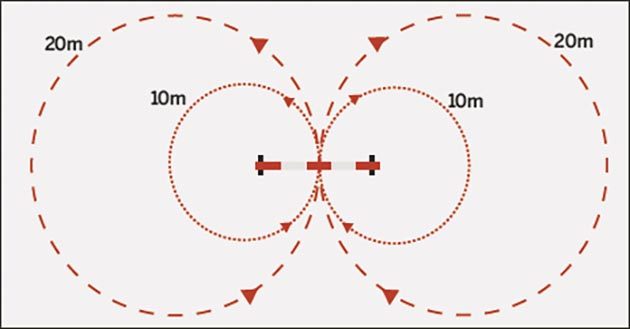Eventing legend Mark Todd explains why he finds this simple, yet effective exercise so useful.
“This exercise teaches a horse to stay in balance, to maintain rhythm and to change his leading leg over a fence,” explains Mark.
“I like my horses to be equal both ways, so this is something we use at all stages of their education. It’s one of the first things we teach the young horses when they start jumping, but we also return to it with the older, more experienced horses as a warm-up.
“It looks easy but it requires accuracy and athleticism, so build up to it gradually.”
The exercise

1. Place a cross-pole in the middle of your schooling area. Ride a 20m circle in canter and make a straight approach to the jump.
2. Stay in balance with your horse, keeping your weight over his centre. The idea is to use your body to influence the leg he lands on without leaning over to the side — instead, turn your upper body and look in the direction you intend to go. Open your inside rein, keeping the same contact and taking your hand away from the horse’s neck rather than pulling.
3. If he lands with the correct lead, continue in canter on the opposite 20m circle and come round again — so you’re effectively riding a figure of eight over the cross-pole and changing the leading leg each time. If he lands on the wrong leg, make a quick trot-canter transition to put it right. Persevere until he lands consistently on the correct lead.
4. Use the circle to improve the horse’s canter. Maintain balance and collection, keeping him around your inside leg and containing him with your outside leg and rein.
5. Once the exercise is established, gradually decrease the circle size to a minimum of 10m. Keep the horse in the right frame and work in a steady rhythm. You can then use some leg-yield to enlarge the circle again.
Potential pitfalls
- Make sure the horse is straight in his body on the approach. If you’re pulling him to one side, he’s unlikely to change leading leg.
- Throwing your weight around or looking down will make it harder for him to land on the correct lead.
- Don’t let the horse get long and flat over the cross-pole; he shouldn’t be diving for it. Aim for a balanced canter so that he makes a nice, round shape over the fence.
For more training tips and useful exercises from top riders, don’t miss the latest issue of Horse & Hound.
For all the latest news analysis, competition reports, interviews, features and much more, check out Horse & Hound magazine, on sale every Thursday.



